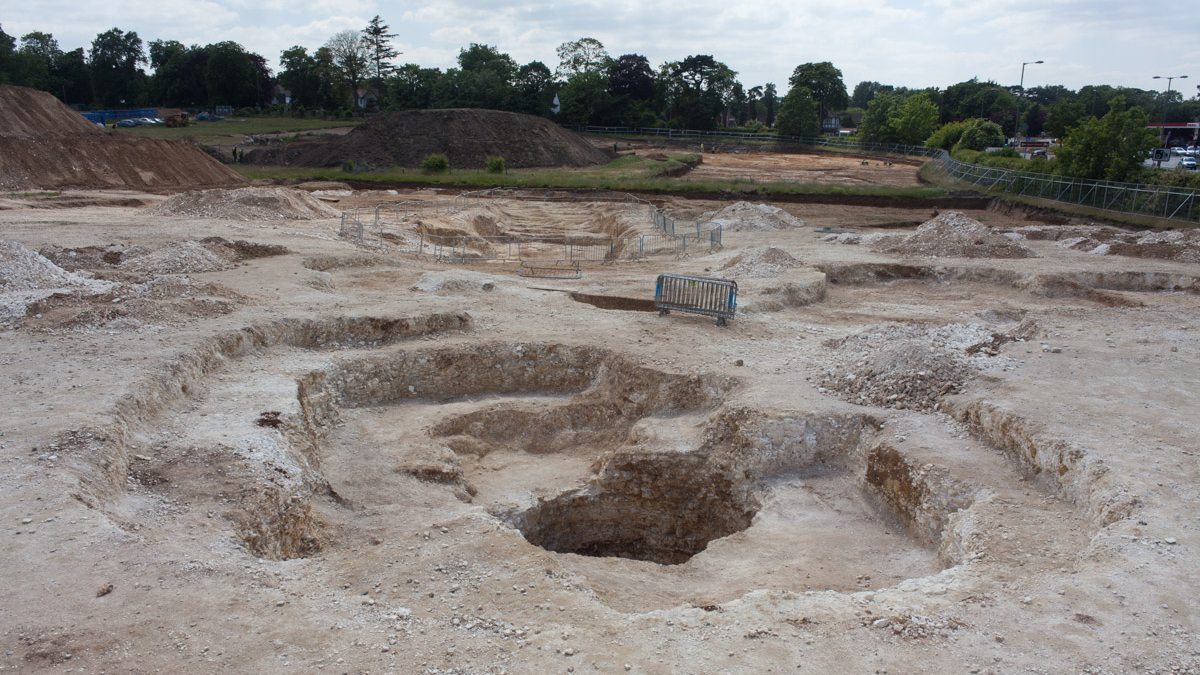While excavating outside London, archaeologists discovered thousands of bones thrown down a quarry shaft in Roman times. But one, in particular, stood out: a dog’s baculum (penis bone) that had been painted red on one side.
“This is the only example I could find of an actual penis having potentially been used as a ritual object,” Ellen Green, a bioarchaeologist at the University of Reading in the U.K., told Live Science in an email. Green detailed her findings in a study published Dec. 25 in the Oxford Journal of Archaeology.
In 2015, archaeologists working at a site called Nescot in the town of Ewell, roughly 12 miles (19 kilometers) south of London, discovered a 13-foot-deep (4 meters) shaft dug into the limestone. From it, they recovered a large mass of human and animal bones that date to between the late first and early second centuries.
Among the bones were the remains of over 280 domestic mammals, including pigs, cows, horses and sheep. But according to Green, the majority of the animals — 70% — were dogs with no evidence of butchering, burning or disease. Most of the dogs were small in stature — likely terriers, corgis or other lap dogs — rather than herd or guard dogs.
Although pits full of human and animal bones and artifacts have been found throughout Roman-era Britain, the painted penis bone from the Nescot shaft is the first of its kind. Using a technique called X-ray fluorescence, which can nondestructively determine the elemental composition of an object, Green discovered that the bone was covered in iron oxide. Because there is no naturally occurring iron oxide at the Nescot site and there were no metal artifacts in the shaft to produce rust, this means that someone specifically brushed red ochre onto a dog’s penis bone before depositing it in the shaft.
Related: Ancient dog-headed statue found during Roman road excavation

“The penis had many associations in the Roman world, and was used as a good luck charm and to ward away the evil eye,” Green said. Given the uniqueness of the find and its placement in a cache of bones and artifacts, it likely represents a ritual item, she added.
Other aspects of the objects from the Nescot shaft suggest the ritual was connected to fertility. The most obvious link is the large number of very young animals, which is unusual in these sorts of shaft deposits, Green explained. Additionally, dogs and horses are historically known to have been connected to “mother goddesses” and to fertility rituals in Iron Age and Roman Europe. And in analyzing the seasonality of the animals’ births, Green found that most were born in the spring and summer, the planting period for important crops like barley and other cereals, linking them to agricultural fertility.
The Nescot shaft was also used repeatedly for about half a century, according to Green, with deposits made in the shaft at least nine times. She found evidence that some bones were being removed from the shaft, handled and then redeposited.
The painted penis bone “was almost certainly defleshed when the ochre was applied, based on the logistical difficulty of removing the specific portion of the penis from a fleshed dog,” Green said.
It is impossible to know for sure why a painted dog penis bone was put into a quarry shaft with around 300 other animals and humans nearly two millennia ago, Green noted in her study, but the evidence supports a link to ideas of abundance, new life and the agricultural cycle.
“I could not find any other similar cases of Roman use of red ochre on bone, nor any examples from the British Iron Age,” Green said. “It is a very unique artifact from a very unique site, but it is ultimately a bit of a mystery.”
